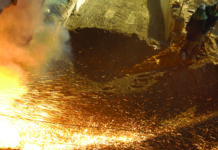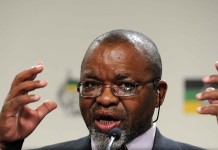
[miningmx.com] – WHAT informs the pragmatism that has broken out between ArcelorMittal SA (AMSA) and Kumba Iron Ore, an Anglo American company, after more than two years of barely concealed hostility over iron ore pricing?
One reason is the removal of the occluding presence of the South African government in terms of its support for Imperial Crown Trading’s (ICT’s) claim over some of the iron ore produced at Sishen Iron Ore Company (SIOC).
The Supreme Court’s rejection of ICT’s claims over iron ore from SIOC is still to be tested in the Constitutional Court. If the judgement is over-turned, it would seriously upset the applecart, but for now there’s a sense ICT’s claim is in the realms of last chance saloon.
Another likely factor is the influence of new Anglo American CEO, Mark Cutifani, who has clearly sought to take a new broom to many of the legacy logjams in the group’s affairs.
In July, Cutifani spoke about Anglo’s constipated project pipeline, and the need to “get its arse into gear’. One suspects settling long-standing claims with silicosis sufferers earlier this week, and now attempting to bring an end to the legal impasse with AMSA is a variation on Cutifani’s call for business momentum theme.
AMSA has legal logjams of its own, most of them relating to anti-competition claims. It would only be beneficial to AMSA to get clarity on at least this subject.
Thirdly, there’s the question of the South African government’s apparent determination to press ahead with amendments to the Minerals & Petroleum Resources Development Amendment Bill. One of the aspects of the bill is to give ministerial discretion to impose so-called ‘developmental pricing’ on mining companies. This is the ability to confer the right on the mines minister to set the selling price of raw materials such as iron ore, as well as coal and manganese.
Anne Dunn, a Kumba spokesperson, said it was likely the parties would have to “clear’ any price negotiations with the government.
Yet in submissions to the minerals portfolio committee last week, both Anglo and BHP Billiton questioned the constitutionality of government challenging commercial agreements between privately-owned companies.
Despite the fresh impetus in negotiations, settling on an iron ore price will be no easy feat, however, especially if analyst forecasts on future iron ore prices is anything to go by.
Citi said in a recent report that the iron ore price for the fourth quarter would fall to $115/t as excess steel production from China found its way into international markets. It’s not the only voice of scepticism regarding the future of iron ore heard by Miningmx in the past few months.
This is despite good looking fundamentals lately. Iron ore prices increased at an average of some 5.4% in September and about 18% over the last 12 months. Macquarie Securities expects that trend to continue saying recently it expected iron ore prices would increase to $150/t to $160/t.
“I haven’t had a requirement for an iron ore trader for some time. Eighteen months ago we were regularly asked about it and I don’t think we’ve been asked about it in the last 12 months,” Charles Crichton, Asia general manager at UK-based Commodity Appointments told Reuters in an article published on September 10.
“The boom of iron ore is not there at the moment to justify paying someone a large amount of money in order to get them across the line because they’re never going to make it back for you,” he said.











